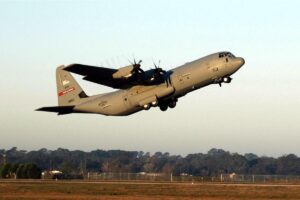Understanding 1553 to ARINC-429 Conversion
Abstract
This white paper explores the intricacies of converting MIL-STD-1553 data to ARINC-429 format, highlighting the benefits of this process for avionics system integration and performance enhancement. With a focus on their unique features and interoperability requirements, the document delves into the techniques, tools, and applications of protocol conversion in modern aerospace systems.
Introduction
Efficient communication is at the heart of modern avionics systems. MIL-STD-1553 and ARINC-429 are two critical protocols widely used in military and commercial aviation. While each has its strengths, integrating systems that rely on both protocols often necessitates data conversion. This paper provides an in-depth look at the benefits, methodologies, and challenges of converting MIL-STD-1553 data to ARINC-429, paving the way for enhanced avionics performance.
Overview of MIL-STD-1553 Protocol
1.1 Background
MIL-STD-1553 was developed in the 1970s to standardize communication for military applications. It features a dual-redundant, time-multiplexed bus system, ensuring reliability and fault tolerance.
1.2 Key Characteristics
- Redundancy: Dual-bus architecture for high reliability.
- Low Latency: Designed for real-time operations.
- Multi-Terminal Support: Connects up to 31 remote terminals.
- Error Checking: Extensive mechanisms to ensure data integrity.
1.3 Applications
- Military Aircraft: Control systems, weapon management.
- Space Missions: Satellite and spacecraft communication.
- Naval Systems: Integrated combat platforms.
Overview of ARINC-429 Protocol
2.1 Background
ARINC-429 is a unidirectional data bus protocol used extensively in commercial avionics. Developed by the Airlines Electronic Engineering Committee (AEEC), it is simple yet highly reliable for specific applications.
2.2 Key Features
- Simplicity: Point-to-point communication reduces complexity.
- Data Format: Utilizes standard word labels for consistency.
- Error Detection: Parity checks ensure accurate data transfer.
- Fixed Data Rate: Operates at 12.5 or 100 kbps.
2.3 Applications
- Commercial Aircraft: Navigation, flight management systems.
- Business Jets: Cabin controls, communication.
- Helicopters: Integrated avionics.
Benefits of 1553 to ARINC-429 Conversion
3.1 Enhanced Integration
Converting 1553 data to ARINC-429 facilitates seamless integration of military-grade components into commercial aircraft systems. This enables better resource utilization and system unification.
3.2 Extended System Life
By supporting legacy 1553 devices in modern ARINC-429 frameworks, conversion extends the usability of existing hardware, delaying costly replacements.
3.3 Cost-Effectiveness
Protocol conversion minimizes the need for significant overhauls, reducing integration costs while ensuring functionality.
3.4 Improved Performance
Combining the robust error detection of 1553 with the simplicity of ARINC-429 results in streamlined data communication and enhanced reliability.
Methods for Protocol Conversion
4.1 Hardware Solutions
Hardware-based converters are specialized devices designed to translate MIL-STD-1553 messages into ARINC-429 format and vice versa.
- Key Features: Real-time processing, multi-channel support, robust error correction.
- Examples: Ruggedized converters for harsh environments, compact modules for avionics bays.
4.2 Software Solutions
Software-based approaches offer flexibility and scalability, enabling protocol conversion through emulation and data translation.
- Advantages: Easily updated, cost-effective for non-critical applications.
- Tools: Virtual gateways, simulation platforms.
4.3 Hybrid Systems
Integrated solutions combine hardware and software to deliver high performance and adaptability for complex avionics systems.
Conversion Process
5.1 Data Mapping
MIL-STD-1553 and ARINC-429 differ in data structures, requiring careful mapping of messages to ensure compatibility.
- Word Formats: Translate command/response structures of 1553 to ARINC-429’s label-based format.
- Error Handling: Maintain integrity through parity checks and redundancy mechanisms.
5.2 Timing and Synchronization
Synchronizing data transmission between the two protocols is critical to prevent delays and data loss.
- Latency Management: Optimize processing speeds to match system requirements.
- Clock Alignment: Use precise timing tools to ensure seamless communication.
5.3 Testing and Validation
Extensive testing ensures the converted data meets performance and safety standards.
- Simulation Tools: Replicate real-world scenarios.
- Compliance Testing: Validate against industry standards.
Applications of 1553 to ARINC-429 Conversion
6.1 Military Aviation
- Integration: Combining 1553-based weapon systems with ARINC-429 avionics.
- Modernization: Upgrading older military aircraft for interoperability.
6.2 Commercial Aviation
- System Upgrades: Retrofitting legacy 1553 equipment into ARINC-429 networks.
- Cabin Management: Ensuring compatibility in mixed-protocol environments.
6.3 Space Exploration
- Satellite Communication: Translating 1553 data for ground-based ARINC-429 systems.
- Mission Control: Supporting hybrid systems in spacecraft.
Tools for Efficient Conversion
7.1 Protocol Gateways
High-performance gateways enable real-time data translation between MIL-STD-1553 and ARINC-429.
- Features: Multi-protocol support, low latency, ruggedized designs.
- Applications: Mission-critical systems, field testing.
7.2 Simulation Platforms
Simulation tools help developers test and validate conversion strategies before deployment.
- Capabilities: Real-time emulation, error injection testing.
- Use Cases: Training, design optimization.
7.3 Diagnostics Tools
Monitoring and debugging tools ensure seamless operation and compliance with standards.
Challenges in Protocol Conversion
8.1 Compatibility Issues
Differences in data formats and structures pose challenges in achieving seamless conversion.
- Solution: Advanced mapping algorithms and adaptive tools.
8.2 Performance Bottlenecks
Latency and throughput limitations can hinder real-time operations.
- Solution: Optimize hardware and software for efficient processing.
8.3 Cost Constraints
High costs associated with hardware and software tools can be a barrier.
- Solution: Choose scalable solutions that balance performance and affordability.
Conclusion
Converting MIL-STD-1553 data to ARINC-429 is a critical process for enhancing avionics system integration and performance. By leveraging advanced tools and methodologies, aerospace industries can achieve seamless interoperability, cost-effectiveness, and reliability. This white paper underscores the importance of protocol conversion in modern aviation and provides insights into overcoming associated challenges.





